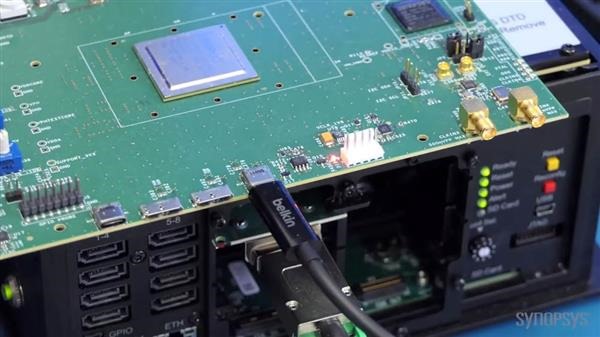
The specifications of USB 3.2 have been fixed since September 2017. As a result, manufacturers were able to start development and finalize both drivers and controllers with the new transmission standard. The manufacturer Synopsys has demonstrated what it claims to be the world’s first demonstration of USB 3.2. The computer used was a normal PC with Windows 10. By bundling the data lines theoretically up to 20 GBit / s are possible.
Both the driver and the controller were developed by the manufacturer. The data was transmitted via the prototype with a maximum of 13 GBit / s or 1,600 MB / s to a computer with Linux. Thus, the speed was much faster than the predecessor USB 3.1. Synopsys emphasized that no new cable was needed for this. Instead, the demo used a USB Type-C cable, which was purchased for a small amount of money in the trade. The difference between the theoretical value and the practice results from the overhead of the transfer.
With USB 3.2, the interface should be even more universal. Due to the higher transmission rate, a higher capacity is available at the same time in order, for example, to be able to supply even higher-resolution displays with the image signal. This is certainly pleasing with a view to the future, since already with the current USB Type C ports not only data is transferred.
It is not yet known when the first ready controllers based on USB 3.2 will hit the market. However, it does not take too long for the first manufacturers to release their solutions. When the interface is natively supported by Intel and AMD chipsets can not be predicted. In the near future, however, motherboard manufacturers will certainly have to resort to additional chips for the realization of USB 3.2. Only gradually will the interface be natively supported by the chipsets.
